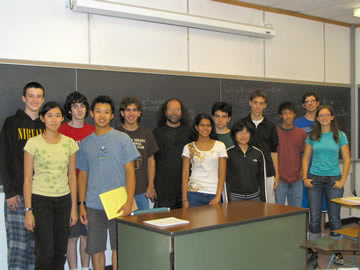 |
New Jersey Governor's School in the Sciences at Drew University |
 |
Drew Links |
|
| Team Projects | |
| NJGSS Home | |
| About NJGSS | |
Related Links |
|
| Drew University | |
2007 Team 6 |
||||||||
CELESTIAL MECHANICS Erica Che, Tyler Ernst, Minqi Jiang, Steve Kuei, Daniel Levine, Priya Marathe, Jeremy Silver, Anthony Savas, Stefan Tintea, Dmitry Vagner, Stephanie Wang Advisor: Dr. Steve Surace |
||||||||
ABSTRACTThe goal of this project was to derive the laws of physics which govern the motion of the heavenly bodies. In order to do this, Kepler's Laws of Planetary Motion were derived from simple physics equations and were then related to laws of geometry. These laws and relationships were then applied to the physical, observable universe by the use of spherical trigonometry. The celestial sphere, the imaginary sphere with the Earth at the center, was used as a model for the observable universe. All celestial objects in the night sky appear to exist on the sphere. Mathematical models can be used to predict the location of any planet on any given day. It is also possible to construct a sundial which can tell the time to a reasonable degree of accuracy. |
||||||||
|
||||||||
For additional information contact NJGSS at 973-408-3605 or mpapier@drew.edu
